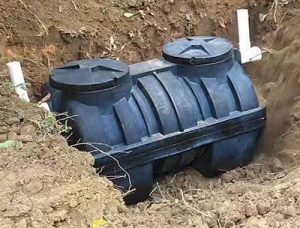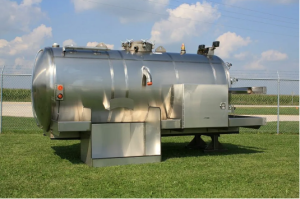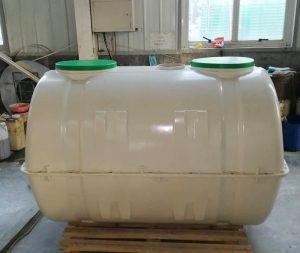Septic tanks are an important part of every inhabited structure, regardless of whether it is a commercial or residential building. Septic tanks are necessary for a home’s drainage system and wastewater management and it is a basic addition to every functional household that requires regular maintenance. Many local zoning laws and regulations require occupied infrastructure to have a functional septic system installed in certain areas, particularly in rural locations where connections to sewage lines might be expensive.
For many homeowners, choosing the proper septic system to be installed in your home is essential. The size of your property, the number of rooms that it will accommodate, and even the type of soil in which your foundation is structured are all important factors to consider when choosing a septic tank for your home. In this article, we will discuss how septic tanks work, their role in wastewater management, and the different types of septic tanks to consider when choosing the right one for your home.
How Do Septic Tanks Work?

Image from Gharpedia
A functional septic tank is a vital inclusion in any household. When a septic tank is maintained when necessary, homeowners will not have to worry about clogged toilets, sinks, and drains. In addition to this, a properly installed septic tank is essential for the health of your family since it helps protect groundwater from contamination and sewage water from backing up into the pipes of your home.
Septic tanks are containers of wastewater in which bacteria and other microorganisms are broken down and emptied into the drainfield. These containers are an essential part of septic systems that are responsible for the wastewater management of inhabited infrastructures. In households, wastewater is flushed into septic tanks, which then allow bacteria to break down the solid waste and convert the contaminated wastewater into groundwater.
Different Types Of Septic Tanks
A septic tank is the main component of a septic system, in addition to the drainfield. A septic tank typically includes an inlet pipe, a baffle (an internal structure in the tank that prevents solids from immediately draining out of the tank), an outlet pipe, and a ventilation pipe to allow biogas to escape the tank safely. Below are the types of septic tanks in septic systems ideal for your home.
1. Concrete Septic Tank

Image from Acton Precast Concrete Limited
Concrete septic tanks are very durable and they are widely regarded as the type of septic tank that can last for decades. Concrete septic tanks are also not susceptible to corrosion and can withstand strong impacts. Although, once a concrete septic tank cracks, wastewater can immediately empty out into the drain field and contaminate the soil surrounding your home.
2. Poly Septic Tank

Image from Septic Tank
A septic tank made of polyethylene plastic, poly septic tanks are ideal for homeowners who are looking for a durable but more affordable septic tank. Poly septic tanks are not prone to corrosion like steel tanks, and it is also relatively safe from cracking, unlike concrete tanks. However, proper installation should always be done because plastic septic tanks can be easily moved by external forces due to their lightness.
3. Steel Septic Tank

Image from Mid-State Tank Co
Another durable type of septic tank, steel septic tanks are best fit for homeowners who want to have a customized septic tank. Steel can be easily fabricated into different shapes and sizes, making steel septic tanks ideal for homes that have a specifically designed area for septic tank installation. Homeowners who are looking for a permanent tank do not prefer steel septic tanks, but steel septic tanks are ideal for short-term use where the tank is only needed for a relatively short period.
4. Fiberglass Septic Tank

Image from undefined.photos
Fiberglass septic tanks are plastic septic tanks reinforced with glass fibers for increased durability. Similar to plastic septic tanks, fiberglass reinforced ones are lightweight and easy to install, but can be buoyant when not without proper anchorage.
5. Aerobic Septic Tank

Electricity powers the most expensive type of septic tank, an aerobic septic tank and requires fewer drain fields. Aerobic septic tanks are ideal for larger households to reduce the instances of a failing septic system. Aerobic septic tanks allow controlled input of air into the container to increase the natural activity inside of bacteria, breaking down the contents and converting wastewater into groundwater.
The Importance Of Septic Tanks
Septic tanks are an important part of any functional household. Choosing the right type of tank for your home is essential in maintaining the hygiene and safety of your family members. Consider asking a professional when deciding what type of septic tank is best for your home as well, to increase the chances of picking the best one that will last in your home for years.
References:
- First Supply. (n.d.). 5 Types of Septic Tanks. First Supply. Retrieved August 9, 2023, from https://www.firstsupply.com/5-types-of-septic-tanks
- Fogle, L. (2022, June 10). 5 Types Of Septic Tanks (And Which Is Best For You!). 1-Tom-Plumber. Retrieved August 9, 2023, from https://www.1tomplumber.com/5-types-septic-tanks/
- P, N. (2022, September 19). Types of Septic Systems: Different Kinds of Septic Systems. Angie’s List. Retrieved August 9, 2023, from https://www.angi.com/articles/types-septic-systems.htm
- SCDHEC. (n.d.). How a Septic Tank System Works. SCDHEC. Retrieved August 9, 2023, from https://scdhec.gov/environment/your-home/how-septic-tank-system-works










